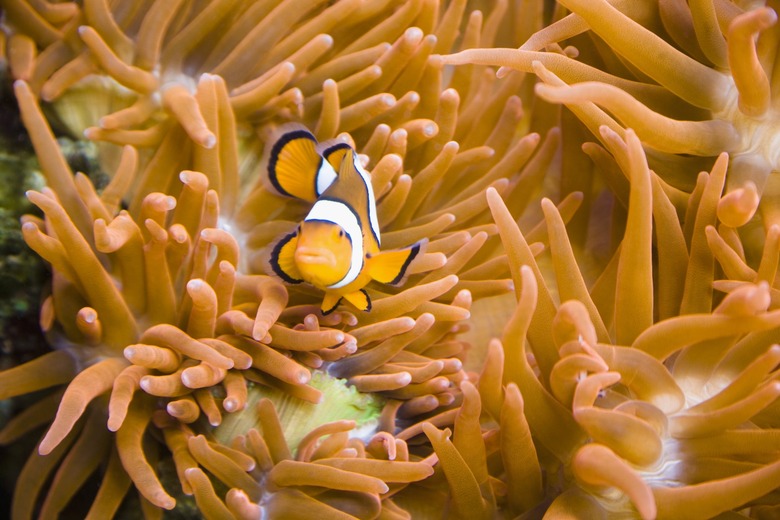Three Adaptations Of The Clown Fish
To best survive in the area in which they live, animals develop adaptations, changes that make them well-suited for their environments. Clown fish live in anemones and plants and they are poisonous to surrounding fish. Being poisonous allows them to kill fish to eat as well as prevent fish from eating them. To survive in this environment, clown fish have developed some key adaptations.
About Clown Fish
About Clown Fish
Clown fish are well-known to most children because of the hit Disney movie "Finding Nemo." They are brightly colored, typically orange, with three white bars on their bodies. Because they are so visually appealing, they are often found as pets in saltwater tanks. However, their natural environment, which is living in temperate waters within anemones, requires special defenses and adaptations.
Immunity to Anemone Poison
Immunity to Anemone Poison
One of the most important clown fish adaptations is an immunity to the poison anemone secrete to kill their prey. When a clown fish first approaches an anemone, he touches the anemone several times, developing this immunity. Clown fish have a thick mucus covering that provides some protection from these stings. Living in these anemone protects clown fish from predators, provides them with a place to lay eggs and allows them an extra opportunity for food. Clown fish often eat the remains of fish killed by the anemones. In return, the clown fish protect anemones from other fish and remove parasites.
Clown Fish Body
Clown Fish Body
Clown fish have more caudal fins than most fish species, which make them slower, more inefficient swimmers. However, this benefits them in the coral reefs because they can turn and dart more quickly. In such tight quarters, this type of swimming is preferable. Clown fish can bleach their skin at night to become the same color as the anemone and thus harder to spot by predators.
Clown Fish Reproduction
Clown Fish Reproduction
All clown fish are born male. In each group, there will be only one female, who is larger than all the males. She will mate with the largest male, leaving the other males sexually immature. However, clown fish have an interesting adaptation in which they have both sex organs. Thus, if the female dies, the dominant male will become female, allowing the next largest male to develop into the breeding male. Once the fish has changed, he is permanently a female.
